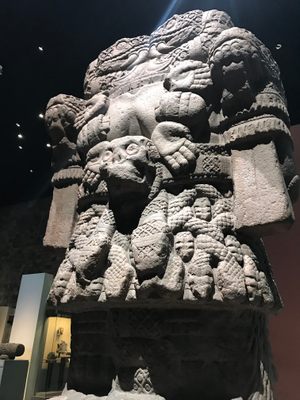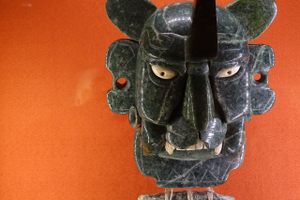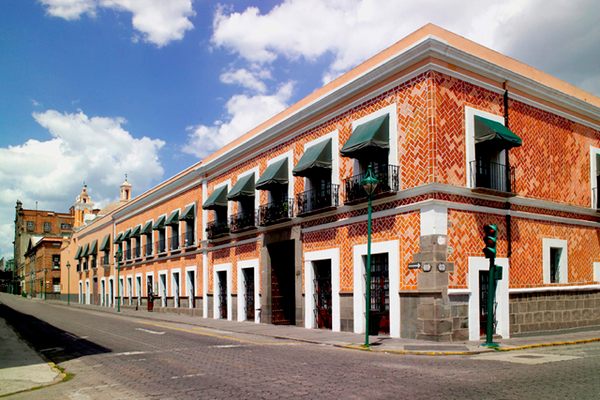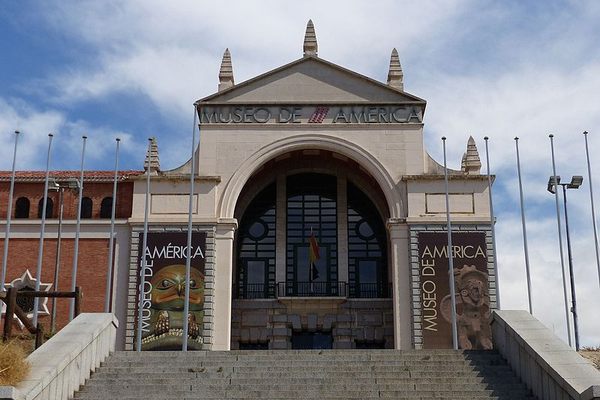About
Coatlicue the Aztec mother goddess was believed to have a dualistic nature. Just like the Earth she could be loving and nurturing by providing the conditions for humankind to survive. She could also be unforgiving and devour human life through natural disasters. As such, she was a mother figure that could inspire both love and fear.
The enormous statue of Coatlicue standing in Mexico City's National Museum of Anthropology towers over the visitor, reaching nearly 10 feet tall. It's likely this colossal sculpture was designed specifically to make those in its presence feel small in comparison and to impress upon them the tremendous power of the goddess.
Coatlicue was a primordial deity with prolific procreative powers, and myths declared that she had given birth to not only the moon and the stars but also to the god of war, Huitzilopochtli. As the mother to this most important deity of the warlike Aztec nation, the goddess was undoubtedly one of the most sacred religious figures of this civilization.
The goddess is generally represented as having a double serpent head with drooping fangs and forked tongues. But it is her writhing snakey skirt that explains her name, which translates as "She of the Serpent Skirt." Her association with the serpent is due to the rattlesnake being an important symbol of fertility and fecundity to the peoples of Central Mexico.
This particular statue has a fascinating story behind it. It was created during the Aztec rule and once stood in a central position near the great pyramid of the capital, Tenochtitlan. After the Spanish conquest of Mexico, the mother goddess was deemed a "pagan idol" and buried under the earth by the Spaniards, who tried to stamp out the pre-Hispanic religions and replace them with Christianity.
Here she remained hidden, and was forgotten for centuries until the 18th century when excavations during the rebuilding of the city center accidentally unearthed her. The colonial authorities, not knowing what to do with this strange discovery, had it placed nearby as a curio. News spread far and wide and hundreds of citizens of the city came out of curiosity to see this fascinating relic of the past. Then something happened that would deeply unsettle the colonial government.
Unexpectedly, huge numbers of indigenous peoples began to arrive from neighboring states and to converge on the Zocalo plaza. Here they held candlelit processions around the statue of the mother goddess, singing late into the night and leaving offerings such as flowers and food at the statue's feet. This terrified both the authorities and criollo elites of Spanish descent who began to fear that a massive uprising against Spanish rule would soon occur. So the statue, despite protestations, was once again buried. Thankfully, it was later unearthed yet again, and eventually displayed at the National Museum of Anthropology, where it remains to this day.
Related Tags
Know Before You Go
The National Museum of Anthropology (Museo Nacional de Antropología) is located within Chapultepec Park (Bosque de Chapultepec), open year-round from Tuesday to Sunday, 9 a.m. to 7 p.m. The entrance fee is 70 pesos; if you are a Mexican citizen or are a foreigner legally residing in Mexico you may visit for free on Sundays. Coatlicue and other Aztec artifacts can be found in the "Sala Mexica" gallery, which is found at the far end of the museum's courtyard beyond the turtle/carp pond.
Flavors of Oaxaca: Markets, Mezcal & Home-Cooked Meals
A Culinary and Cultural Journey Through Oaxaca.
Book NowCommunity Contributors
Added By
Published
April 26, 2019































